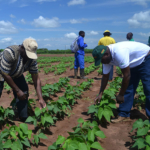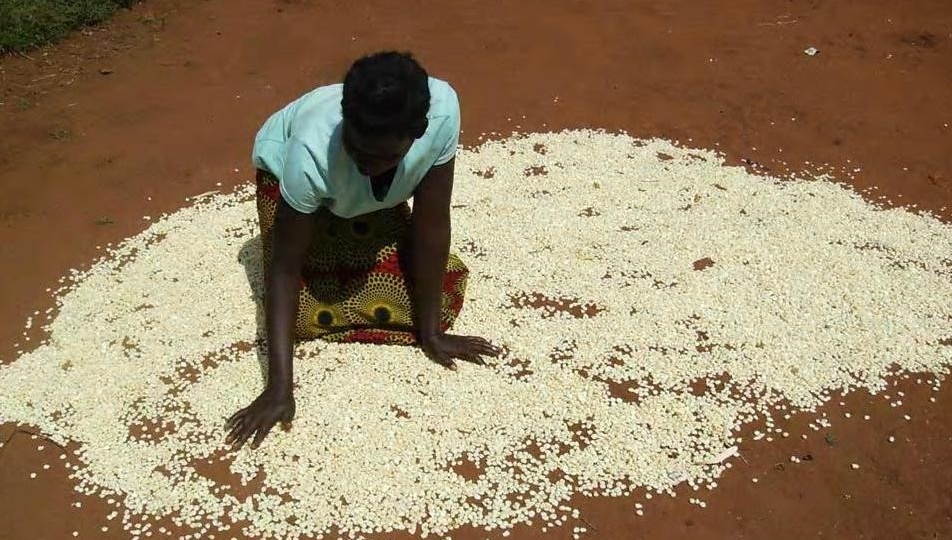


Makerere University
National Agricultural Research Organization (NARO) - NARL, Volunteer Efforts Development
Uganda
12/2013—12/2014
Grains and root crops are widely grown and consumed in Uganda. However, 19% of the Ugandan population is undernourished with half of those affected not having access to adequate amounts of calories. Malnutrition and under-nutrition among children under 5 years old is unacceptably high. The malnourishment is partly attributed to the nutritional inadequacies of traditional staples and partly to the seasonal food availability. This leads to cyclic abundance and shortage of foods in general, and of specific nutrients. Nutrition and incomes of farm families are limited by high postharvest losses, estimated at 10-15% for grains and 20-25% for root crops, resulting from improper postharvest handling. Poor postharvest handling also leads to low produce quality, with problems such as mycotoxin contamination being widespread. Application of good postharvest handling practices and processing has potential to contribute to improvement of product quality and stabilization of food availability. Processing could also be used to create products that address malnutrition. Through blending of starchy staples and foods with complementary nutritional value and application of suitable processing procedures, it is possible to develop nutrient and energy dense foods to supplement crop-based diets.The proposed project will build upon work conducted during a previously McKnight-funded project. The team intends to investigate the current postharvest handling practices within the communities with which they were working, and to improve on these methods to reduce losses and wastage. The project will also address the safety of the foods. The team will work with the community to devise processing options to enable people to transform crops into products that are nutritionally superior and have a long enough shelf life to tide families over seasons of shortage. Mothers and women will be a major target group for this project, as the products will mainly be produced for young children and infants who suffer most from malnutrition. The project also intends to build the capacity of the communities the work in and the extension services in matters related to postharvest handling of crops for enhanced food and nutritional security and income generation.
Reduced postharvest losses and lower seasonable variations in food availabilityIncreased availability of safe, nutritionally balanced and relatively inexpensive complementary food suitable for feeding of weaning age childrenImprovement in quality of food produce in the communitiesImproved collaboration between smallholder farmers and other value chain actors;Increased small holder farmer incomes
Baseline survey collected information on Farmers’ socio-demographics; Production levels for different crops; Farmers’ estimates of postharvest losses for the different crops; Farmers’ knowledge, attitudes and practices of postharvest handling; Factors associated with quantitative and qualitative postharvest losses; Availability and prices of different grain and tuber crops over different seasons; Local postharvest support systems. Most (72.7%) of the 485 interview respondents were aged 18-49. Females constituted 65% of the respondents. The education level for most of the respondents was rather low, with only 27.3% reporting to have attained secondary level education. The majority (84.5%) of the respondents belonged to a farmer group. A high percentage (71.2%) of the respondents had a household size of five or more, possibly indicating a high dependence ratio.The socio-demographics data points to a high involvement of young to middle age people, dominated by females of relatively low educational level in postharvest handling of crops. This information is important in designing of targeted postharvest technologies.Results of key informant interviews and focus group discussions that farmers’ knowledge on most of post-harvest processes was fairly good. However, farmers lack the basic facilities for post-harvest handling and are almost exclusively dependent on traditional facilities and methodsThe most important crops were found to be maize, millet, beans and cassava for Apac district; maize, beans, sweet potatoes and cassava for Kamuli and Nakasongola. Most of the postharvest loss were reported to occur during harvest, processing and during storage. The losses ranged from 20 – 45 %. The qualitative postharvest forms of losses reported included insect infestation, moulding, change in appearance, sprouting; mixture of varieties; presence of shriveled grains.Prevalence of aflatoxins in foods from the study area was determined. Sorghum, maize and groundnuts exhibited the highest levels of aflatoxin contamination. Sorghum samples had high aflatoxin load (20.33ppb) beyond the limit acceptable (>10ppb). Aflatoxin levels of maize samples were notably high in Apac (10.38) and Kamuli (6.365) while groundnut samples portrayed high levels of aflatoxin (11.53) in Nakasongola district. It was noted that samples that exhibited significant aflatoxin levels did not necessarily show any physical defects.Food that has undergone deterioration to the extent of being unfit for human consumption was put to alternative uses to redeem some value. Most of the deteriorated grains were used as animal feed while most of the cassava and sweetpotatoes were either thrown away or fermented to alcohol. It is important to note that if food contaminated with aflatoxins is fed to animals, the milk and meat from such animals are also likely to be contaminated with aflatoxins. In addition, aflatoxins cause toxicity to animals. Interventions aimed at promoting good postharvest handling should also encourage proper handling of crops meant for animal feeding.
